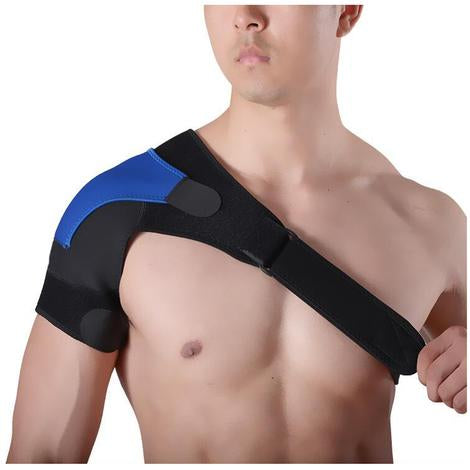
Make shoulders easier!
Share
In work and life, shoulder soreness often occurs, and severe pain has a great impact on the work and life of patients. In fact, there are many reasons for inducing shoulder pain, and it is necessary to determine the etiology and targeted treatment according to the scientific diagnosis of the patient's disease. The following is to introduce to you the causes of common clinical shoulder pain:

The common causes of shoulder pain are shoulder periarthritis, cervical spondylosis, cholecystitis, shoulder tuberculosis, angina pectoris, shoulder tumor, etc.
The most common reason for inducing shoulder pain is periarthritis of shoulder, also known as "50 shoulder", also known as "leakage shoulder wind", is the abbreviation of periarthritis of shoulder. The generalized "periarthritis of shoulder" refers to the inflammation and pain around the shoulder joint caused by various reasons. Idiopathic "periarthritis of shoulder" is no obvious reason for the shoulder joint "frozen", limited activity. Our daily "periarthritis of shoulder" refers to the latter, mostly in people around 50 years old, it is shoulder pain and movement dysfunction as the main feature.
Cervical spondylosis caused by neck and back pain, neck activity is often caused by nerve root compression stimulation, there will generally be an electric shock like feeling, reflex, accompanied by finger numbness, limb chill and pressure innervation area skin sensation is abnormal, but no shoulder joint activity disorder.

Sensory nerves overlap in areas such as the gallbladder and the right shoulder, so inflammation of the gallbladder can cause dull pain in the right shoulder and under the right scapula. If, in addition to shoulder pain, there are recurrent symptoms of indigestion such as heartburn, belching, acid reflux, abdominal distension and nausea, don't forget to go to the hospital to have your gall bladder checked.
Tuberculosis of shoulder joint and periarthritis of shoulder all have shoulder pain and function limitation, but the onset of tuberculosis of shoulder joint is slow, often in the afternoon low fever, night sweat, systemic fatigue, pale complexion, zygomatic peach and other systemic symptoms.
Angina pectoris, myocardial infarction. Myocardial ischemia pain is not only in the anterior heart area, but also radiates to areas such as the left shoulder.
Tumor growth around the shoulder at a certain stage may cause shoulder pain or dysfunction of the arm and shoulder. The difference with periarthritis of shoulder is: the affected shoulder pain gradually aggravated, the pain site due to the growth of the tumor, local gradually enlarged and expanded.
How to improve shoulder pain?
1. Gently shake your shoulders. Shake your shoulders with four fingers other than your thumb as if you were on a dough bar. Shake three rounds per second for at least 30 seconds.
2. Keeping warm can quickly eliminate stiffness. Warm shoulder can use a hot towel on the shoulder, or with the warm air blow hair dryer can be. About 30 minutes at a time, remember to use your own temperature control, do not let yourself burn.
3. Breathe deeply when you feel stiff. Deep breathing can activate the autonomic nerve, let the parasympathetic nerve excited, so that the body is in a relaxed state. As soon as the body relaxes, the muscles will follow and the back muscles will naturally stretch.
4. Stretching is very effective. Pull your shoulders back as if you were enlarging your chest: Extend your elbows as far back as you can, and stretch your shoulders as if you were meeting in your back. Cross your arms away from the shoulder bone: Cross your hands over your chest as if you are moving away from the shoulder bone, reaching out as far as possible.
5. Improve your "posture." The computer monitor should be in front of the eye, as far as possible, not to the left or right. The monitor should be placed at or slightly above eye level.










